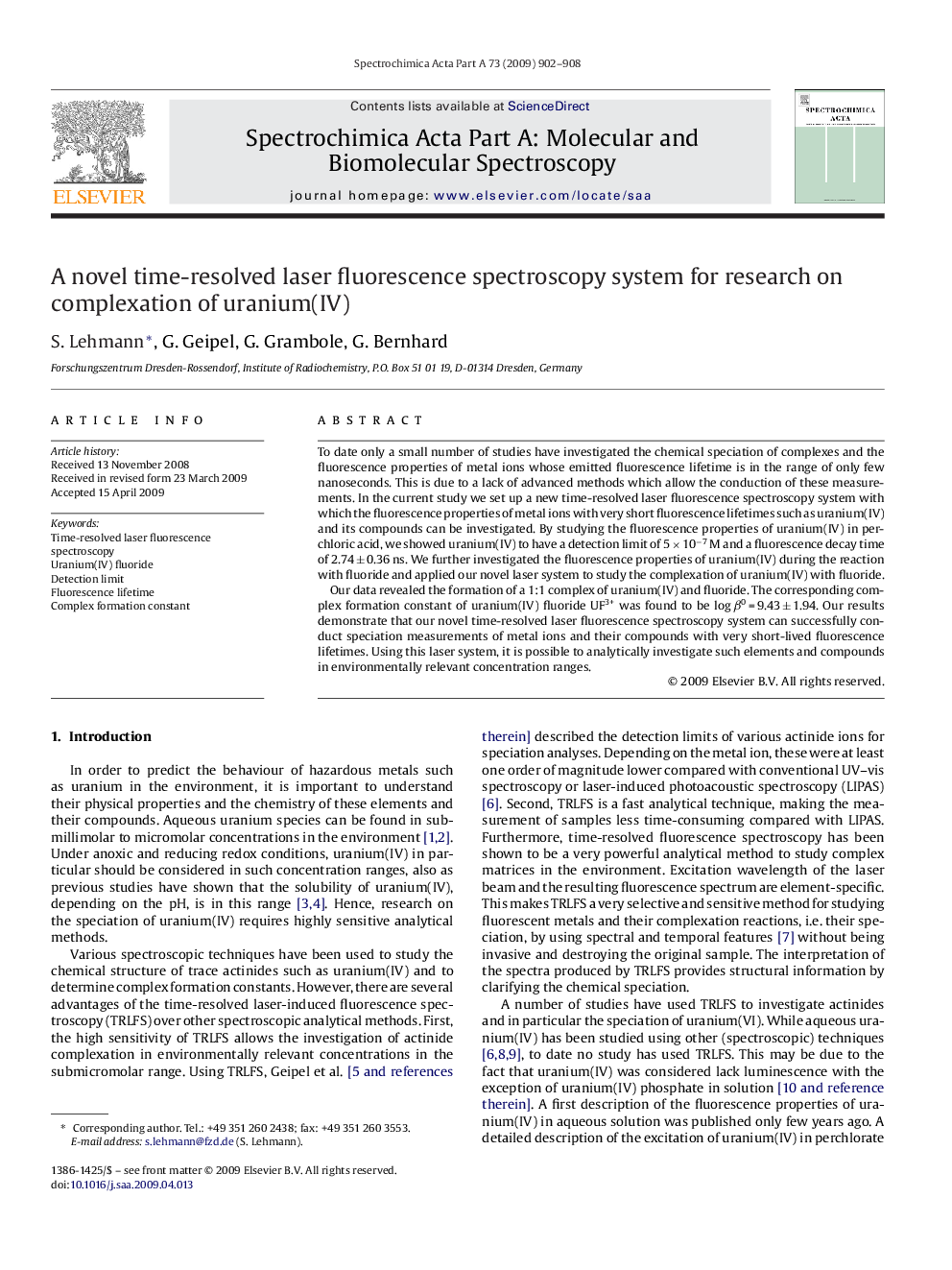| Article ID | Journal | Published Year | Pages | File Type |
|---|---|---|---|---|
| 1233061 | Spectrochimica Acta Part A: Molecular and Biomolecular Spectroscopy | 2009 | 7 Pages |
To date only a small number of studies have investigated the chemical speciation of complexes and the fluorescence properties of metal ions whose emitted fluorescence lifetime is in the range of only few nanoseconds. This is due to a lack of advanced methods which allow the conduction of these measurements. In the current study we set up a new time-resolved laser fluorescence spectroscopy system with which the fluorescence properties of metal ions with very short fluorescence lifetimes such as uranium(IV) and its compounds can be investigated. By studying the fluorescence properties of uranium(IV) in perchloric acid, we showed uranium(IV) to have a detection limit of 5 × 10−7 M and a fluorescence decay time of 2.74 ± 0.36 ns. We further investigated the fluorescence properties of uranium(IV) during the reaction with fluoride and applied our novel laser system to study the complexation of uranium(IV) with fluoride.Our data revealed the formation of a 1:1 complex of uranium(IV) and fluoride. The corresponding complex formation constant of uranium(IV) fluoride UF3+ was found to be log β0 = 9.43 ± 1.94. Our results demonstrate that our novel time-resolved laser fluorescence spectroscopy system can successfully conduct speciation measurements of metal ions and their compounds with very short-lived fluorescence lifetimes. Using this laser system, it is possible to analytically investigate such elements and compounds in environmentally relevant concentration ranges.
